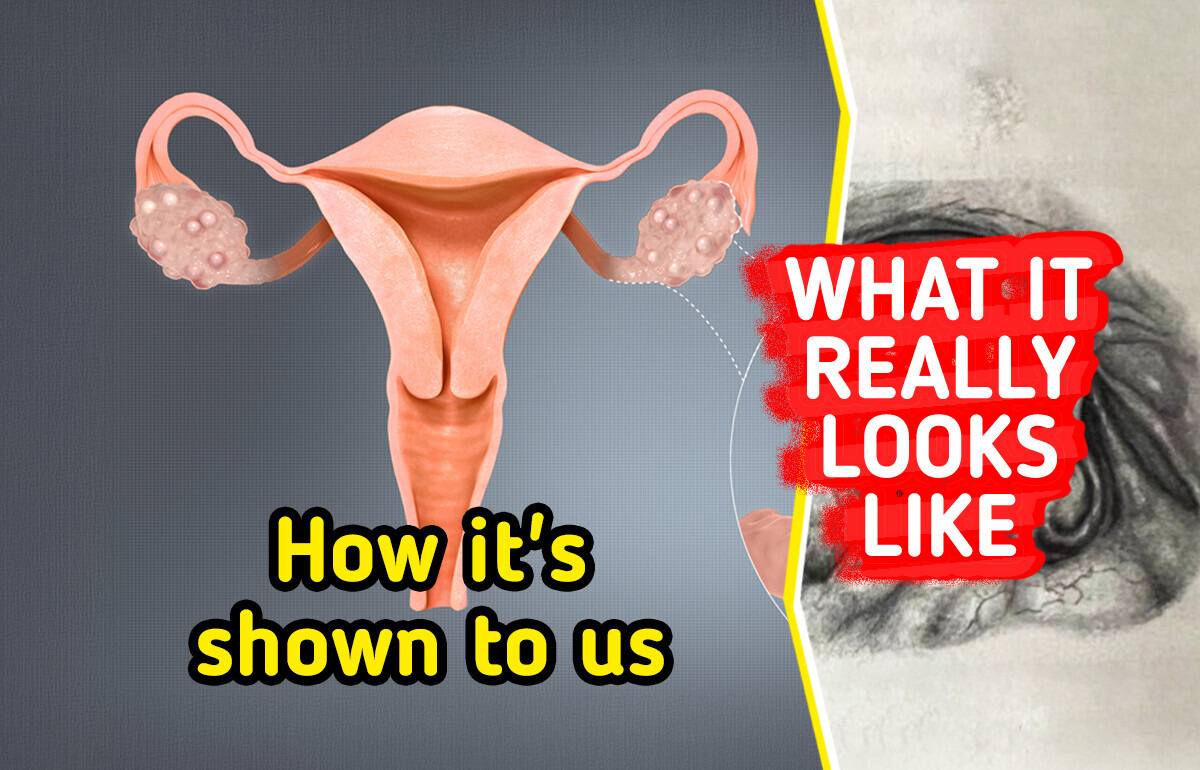16 Handy People Who Create Masterpieces Out of Nothing


The human body is full of incredible surprises—hidden talents, weird quirks, and jaw-dropping secrets that no one might have ever told you about. Some of them sound (and look) so unbelievable, they could be straight out of a sci-fi movie—but they’re absolutely real.
Brace yourself for 10 seriously astonishing discoveries about what your own body might hide from you. Once you know the truth, you’ll never see yourself the same way again!
Back in 2022, one user asked doctors a very tricky question on a specialized resource. The question read, “Dear Doctors: When I told my dentist that I’m having knee surgery this summer, she said to be sure the surgeon knows that my hair is naturally red and not dyed. She said redheads respond to pain drugs differently, and that she actually has to use more anesthetic on me. Is that really true?”
The doctors Elizabeth Ko, MD and Eve Glazier, MD, explained that less than 2% of the world has natural red hair, making it the rarest hair color. Red hair comes from MC1R gene variants, which also influence skin tone, UV sensitivity, and pain perception.
“Red hair is the only physical characteristic that indicates how much anesthetic a person needs,” adds anesthesia researcher Daniel Sessler, MD. “Redheads report more pain during procedures. Some studies also show that people with red hair are more resistant to local anesthetics. And they may need more general anesthesia to keep them sleeping during medical procedures.”
There’s an uncommon neurological condition, called Alice in Wonderland Syndrome, that affects the way a person perceives their body, surroundings, or both.
Alice in Wonderland Syndrome (AIWS) can make body parts or objects seem bigger, smaller, or distorted. These strange perceptions often happen at night.
The exact cause of AIWS is still unknown, but it has been linked to migraines, epilepsy, brain tumors, certain drugs, and viral infections like Epstein-Barr. There is no definite cure for AIWS, but managing migraines with medication and diet can help. In some cases, AIWS can become a long-term condition.
Laser tattoo removal doesn’t actually erase the tattoo itself. Instead, the laser breaks the ink particles into tiny pieces, making it easier for the body’s immune system to flush them out through the liver.
Since tattoo ink is a foreign substance, the immune system naturally tries to remove it, but the particles are usually too big for white blood cells to handle on their own. The laser helps by making the ink small enough for the body to process, allowing it to be cleared out through the lymphatic system.
So, it’s your immune system that actually removes the ink. Once the pigment is broken down, you just pee it out.
Your tongue is crazy good at sensing textures. So much so that just by looking at something, you can almost feel what it’d be like to lick it. Try it—glance at your wall, your shoe, your shirt. Your tongue just knows.
But how? Sure, you’ve tasted cereal and spoons, but what about your couch or computer mouse? Turns out, you learned a lot about the world as a baby by sticking things in your mouth. Your hands and tongue were your first explorers, building a sensory memory that still sticks with you.
Thanks to nerves like the lingual and glossopharyngeal, your brain has a whole archive of “mouthfeel” stored away. You might not remember licking the couch—but your tongue does.
If you think you’re fearless, think again—humans are born afraid of two things: falling and loud noises. Every other fear? That’s picked up along the way.
A 1960 study looked at depth perception in infants aged 6 to 14 months and young animals. Researchers placed them on a platform with plexiglass just beyond the edge to see if they would step over the “visual cliff.” Most of the subjects, both children and animals, didn’t step out onto the plexiglass. This instinctive fear of falling is crucial for survival in many species.
When you hear loud sounds, your body usually reacts with a fight-or-flight response. This is called the “acoustic startle reflex,” according to Seth Norrholm, a neuroscientist at Emory University. He explains that if the sound is loud enough, “you’re going to duck down your head. Loud noises typically mean startling. That circuitry is innate.” It’s a response we have, that signals something dangerous may be around the corner.
In short, sunburns and tans are just your skin reacting to DNA damage from the sun’s UV rays. While neither is directly harmful, they’re both signs that your DNA has been damaged, which raises your risk of skin cancer over time.
When your skin is damaged by the sun, the body’s immediate response is to kill off the affected cells through a process called apoptosis. This helps prevent mutated cells from multiplying uncontrollably and forming tumors.
On the outer layers, damaged cells just flake off, which is why you peel after a sunburn. But in deeper layers, dead cells need to be cleared out more actively. They release fragments of damaged genetic material, which triggers an inflammatory response.
This response is similar to how your body reacts to an infection: blood vessels widen, increasing blood flow (which makes your skin feel hot), and extra proteins are produced, causing pain and itchiness. If enough cells are killed, blisters form to let blood plasma pool near the damaged tissue to help with healing.
If you find yourself sneezing uncontrollably when suddenly exposed to bright light or intense sunlight, you might have a genetic trait known as “ACHOO Syndrome,” or the photic sneeze reflex. This condition causes some individuals to sneeze multiple times upon entering bright light, even without the presence of typical irritants like dust or pollen.
ACHOO Syndrome is inherited in an autosomal dominant manner, meaning that if one of your parents has this reflex, you have a 50% chance of inheriting it. Researchers have identified multiple genetic markers associated with this reflex, suggesting that several genes contribute to its expression.
While photic sneezing is generally harmless, it can pose risks in certain situations. For example, sudden sneezing while operating a vehicle or machinery can lead to loss of control and potential accidents.
So, the next time you step into the sun and feel a sneeze coming on, remember it might just be your genetics at work!
Human skin is covered in invisible stripes known as Lines of Blaschko. These patterns are believed to trace the movement of embryonic cells during early development in the womb. Although typically unseen, this mysterious pattern can become visible under certain rare conditions, such as specific skin diseases or pigmentation disorders.
The lines are named after Alfred Blaschko, the first person to describe them. A German dermatologist, Blaschko, gathered data from patients with specific skin conditions, mapping the distribution of lesions on their skin. In 1901, he presented his findings at a conference, revealing a pattern that didn’t align with any known anatomical structures.
While other patterns exist on human skin—such as Langer’s lines, which guide surgical incisions— Lines of Blaschko remained unique and unexplained.
In severe cases of endometriosis, uterine tissue—normally found lining the uterus and shed during a period—can grow throughout the entire body.
This misplaced tissue has been found in the colon, bladder, lungs, and, in rare cases, even the brain. Because it continues to respond to hormonal cycles and attempts to shed like normal uterine lining, it can cause intense pain and inflammation, as the blood has nowhere to go.
The way uterus and other pelvic organs are shown in medical illustrations is somewhat different from how it looks like as they are usually positioned inside the body.
Now, when you think about how exactly the uterus looks like, you may have a totally different image of this organ in your mind, from what you’ve been shown during your anatomy lessons.
And here are 15 breathtaking photos that prove that the human body is a real masterpiece and a marvel of wonders.











